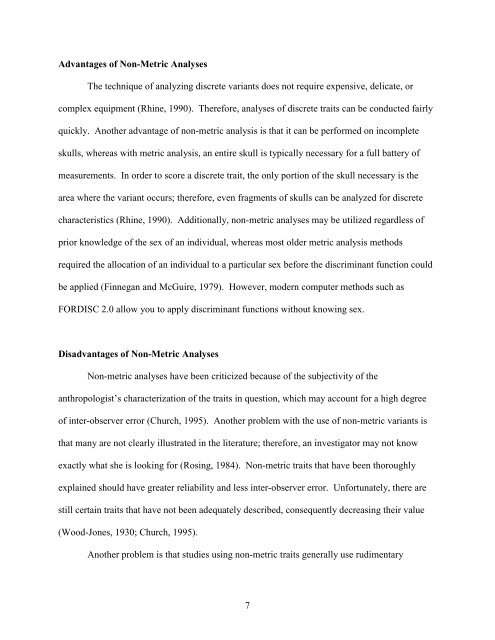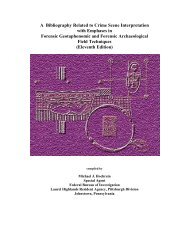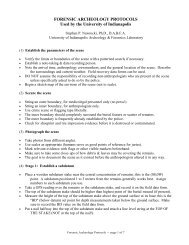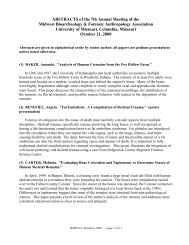Christopher W. Schmidt - University of Indianapolis Archeology ...
Christopher W. Schmidt - University of Indianapolis Archeology ...
Christopher W. Schmidt - University of Indianapolis Archeology ...
Create successful ePaper yourself
Turn your PDF publications into a flip-book with our unique Google optimized e-Paper software.
Advantages <strong>of</strong> Non-Metric Analyses<br />
The technique <strong>of</strong> analyzing discrete variants does not require expensive, delicate, or<br />
complex equipment (Rhine, 1990). Therefore, analyses <strong>of</strong> discrete traits can be conducted fairly<br />
quickly. Another advantage <strong>of</strong> non-metric analysis is that it can be performed on incomplete<br />
skulls, whereas with metric analysis, an entire skull is typically necessary for a full battery <strong>of</strong><br />
measurements. In order to score a discrete trait, the only portion <strong>of</strong> the skull necessary is the<br />
area where the variant occurs; therefore, even fragments <strong>of</strong> skulls can be analyzed for discrete<br />
characteristics (Rhine, 1990). Additionally, non-metric analyses may be utilized regardless <strong>of</strong><br />
prior knowledge <strong>of</strong> the sex <strong>of</strong> an individual, whereas most older metric analysis methods<br />
required the allocation <strong>of</strong> an individual to a particular sex before the discriminant function could<br />
be applied (Finnegan and McGuire, 1979). However, modern computer methods such as<br />
FORDISC 2.0 allow you to apply discriminant functions without knowing sex.<br />
Disadvantages <strong>of</strong> Non-Metric Analyses<br />
Non-metric analyses have been criticized because <strong>of</strong> the subjectivity <strong>of</strong> the<br />
anthropologist’s characterization <strong>of</strong> the traits in question, which may account for a high degree<br />
<strong>of</strong> inter-observer error (Church, 1995). Another problem with the use <strong>of</strong> non-metric variants is<br />
that many are not clearly illustrated in the literature; therefore, an investigator may not know<br />
exactly what she is looking for (Rosing, 1984). Non-metric traits that have been thoroughly<br />
explained should have greater reliability and less inter-observer error. Unfortunately, there are<br />
still certain traits that have not been adequately described, consequently decreasing their value<br />
(Wood-Jones, 1930; Church, 1995).<br />
Another problem is that studies using non-metric traits generally use rudimentary<br />
7








